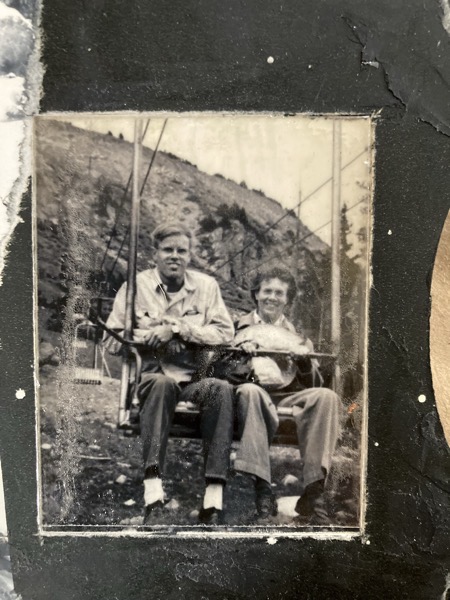
My great aunt, Ruth Wheeler took on the care and raising of my father when he was orphaned at an early age; my friends had grandmothers – I had a great aunt. She was a trusted and interesting elder, but not at all warm and cuddly. She and my dad spent as much time in the Colorado Rockies as they could manage – they are pictured above on one of their adventures.
Although our shared time was sporadic, it was significant. Her demeaner, lifestyle and interests have had a lasting impact on me, Ruth was a dedicated educator and organizer, her commitment to youth advocacy steadfast and lifelong. Until just a few years ago, I was able to share memories of her with some of her former students; many of whom still remember her vividly as a junior high biology teacher, although she retired from teaching in 1964.
I was the niece she was closest to, and, with her blessing, I took on the stewardship of her leavings both before and after her death in 1998. She was 99 years old when she died – lucid and still curious about the world around her until just hours before her death. There was a magnificent snowstorm the day of her funeral so I missed it. I instead spent the day watching dozens of ducks fly in various spiraling masses over a wetlands area – something I’d never seen waterfowl do before, and haven’t since.
Her archive included many publications on youth education, as well as folders full of handwritten notes and lesson plans. As I rummage around in these dusty bits of paper, I experience gratitude that I was educated in a time when analog ruled, when experiential learning wasn’t a specialty category but how one learned about the world. Ruth taught biology, and also worked outside the school cirriculum with various youth groups, heading up nature picnics, bird watching field trips and camping trips. She was also an amateur photographer. Using some of her notes and photographs I’ve created 2 (very limited) artists’ book works editions, Botany Education and Zoology Education.
Creating unique works, working in series or with variable limited editions allows me to add complex and time consuming elements to my work without getting too stuck in the time suck and tedium of production. Elements such as half round pages in a shaped tray and hand embroidered or hand inked text. Making decisions and selections of base materials and structures that enhance the overall has long been one of my priorities as evidenced in these bookworks.
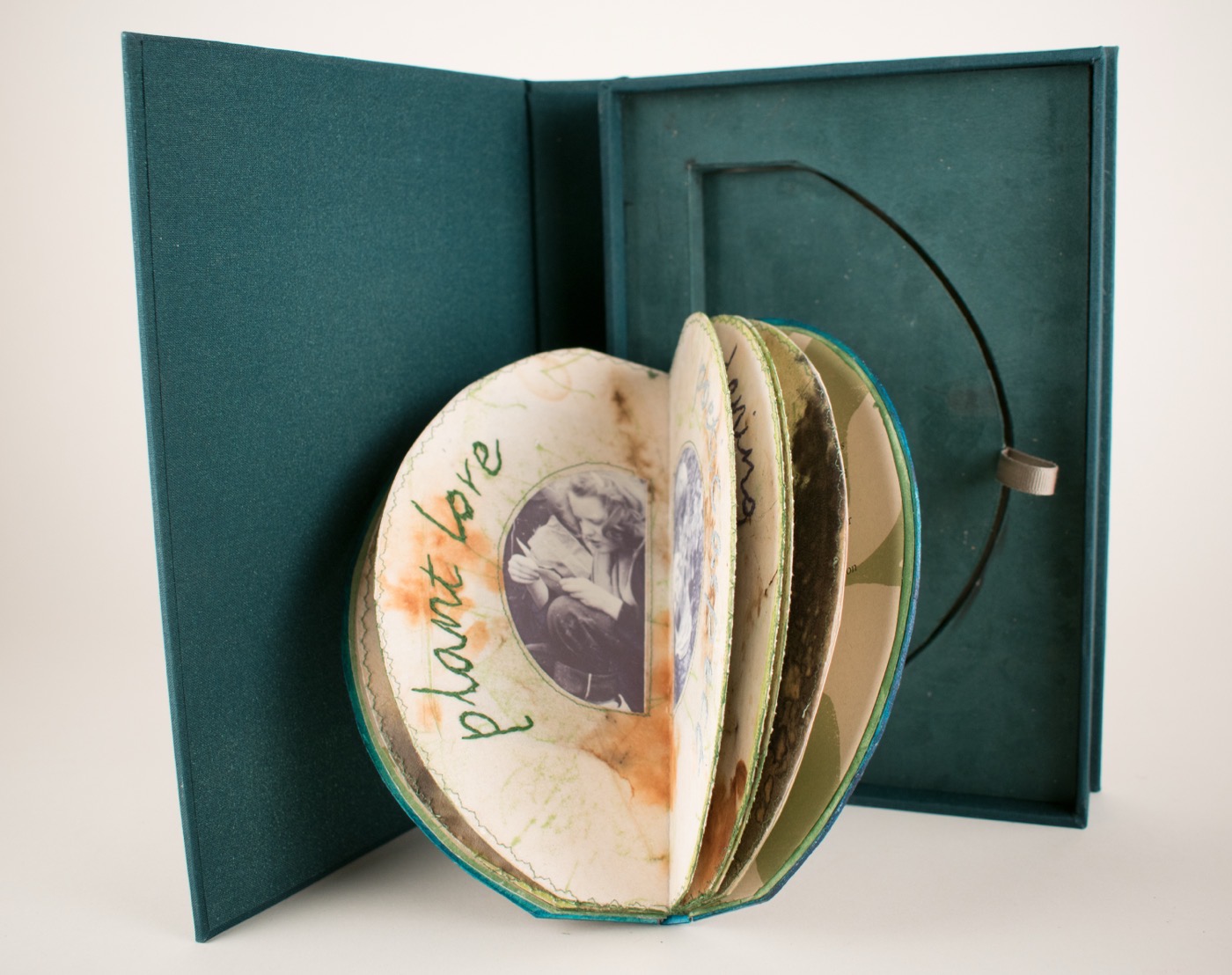
Botany Education (2022) presents text extracted from Ruth’s notes on using botany for youth education. Images are digital reproductions from her photographic archive and date from 1928 – 1964. The text is embroidered using 2 strand floss on linen backed kozo paper that has been handprinted using botanical specimens and relief plates. End pages are Nidiggen paper printed from shaped wood plates. Covers are botanical printed sheepskin over shaped boards with floss embroidery.
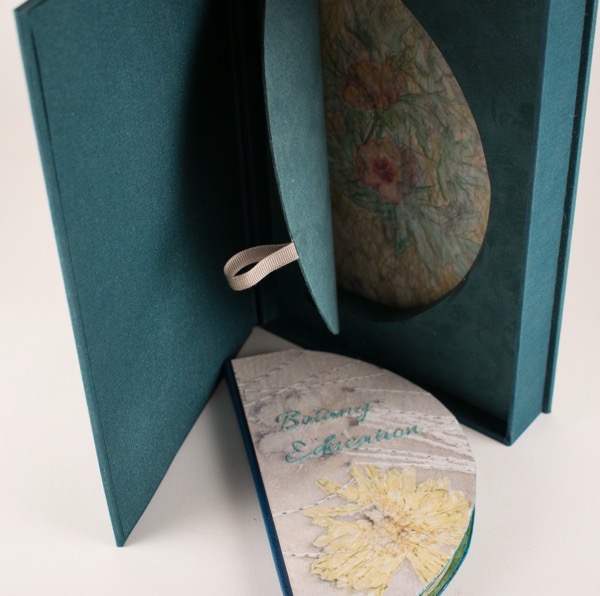
Housed in a custom, drop-spine box with a shaped, recessed tray. The tray bottom has an original colored pencil drawing protected with cast acrylic that becomes visible with a hinged platform is lifted to facilitate lifting the book from the tray.
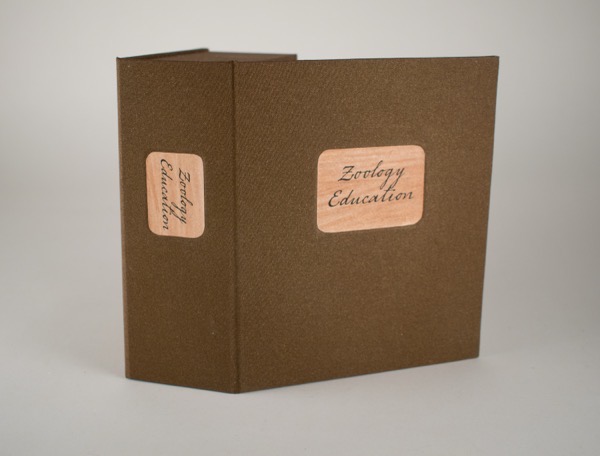
Zoology Education (2023) presents text extracted from her notes on using zoology for youth education. Images are digital reproductions from her photographic archive and date from 1935 – 1974. The text is hand-written with India ink on parchment. The pages are rag printmaking paper hand-printed from copper engravings. End pages are handmade paper. Covers are vellum; the text block laced in with soft leather strips.
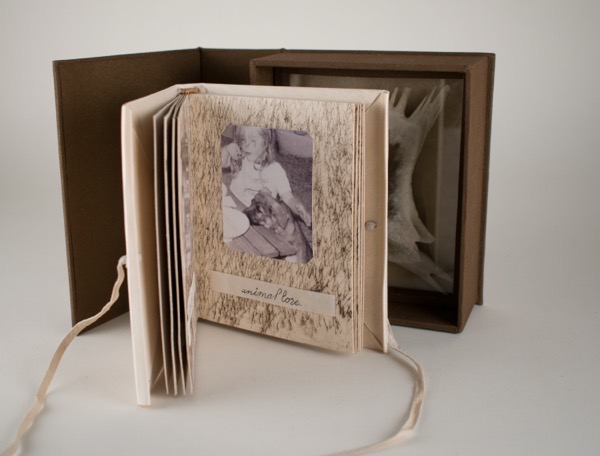
Housed in a custom, drop-spine box with a recessed tray. The tray bottom is lined with sheepskin on which rest zoological specimens (a sea turtle bone in variant 1; 2 mounted moths in variant 2). The case is covered with book cloth that has been airbrushed with metallic acrylic. Case labels are laserprint on treated paper.